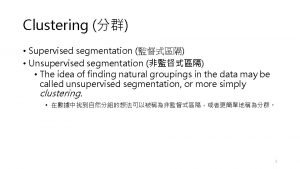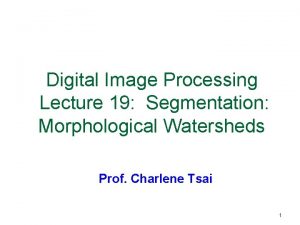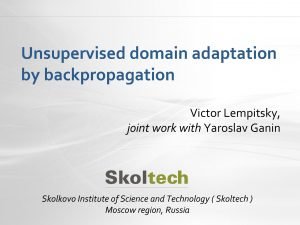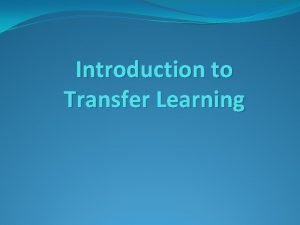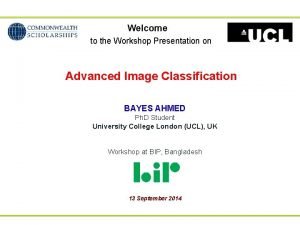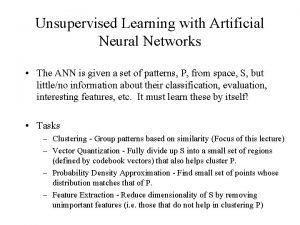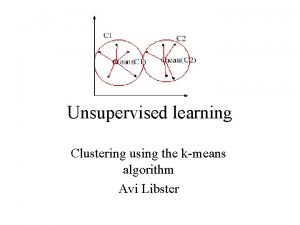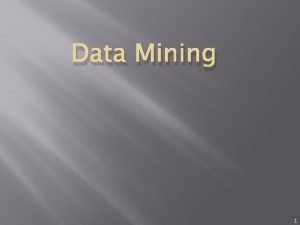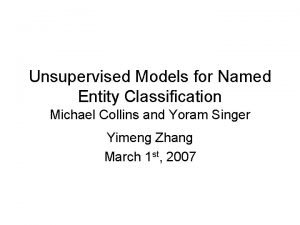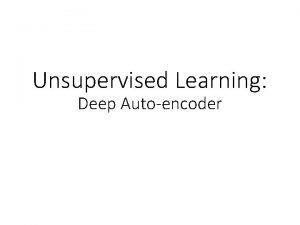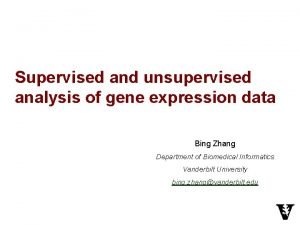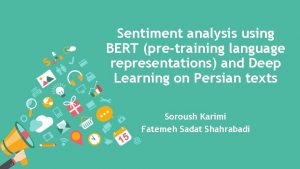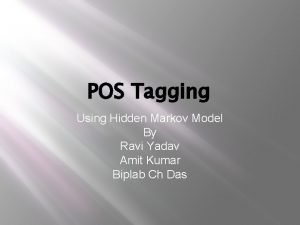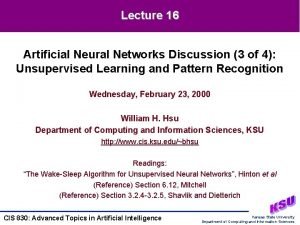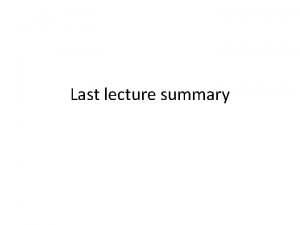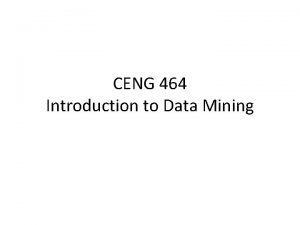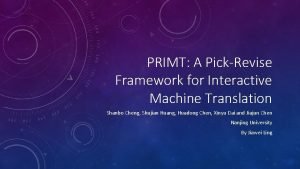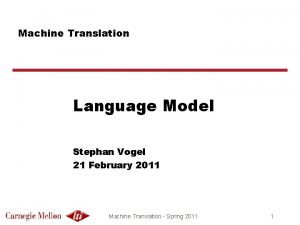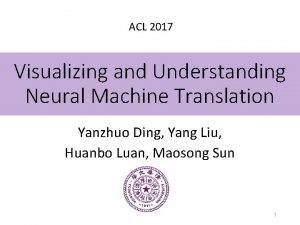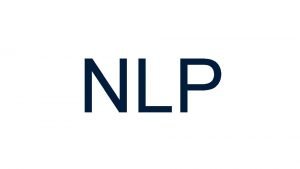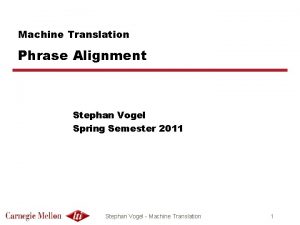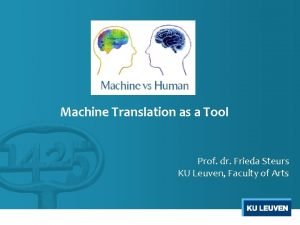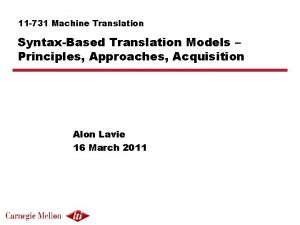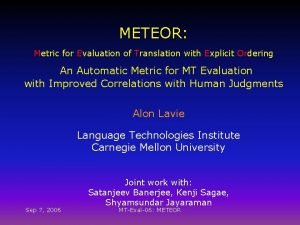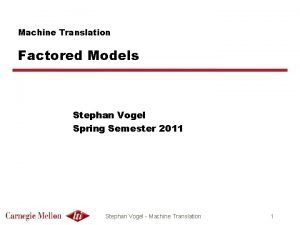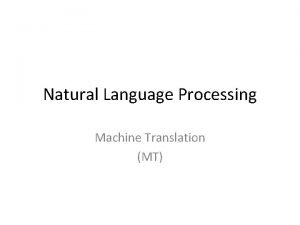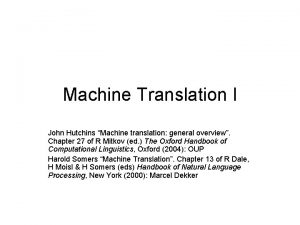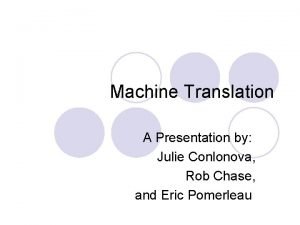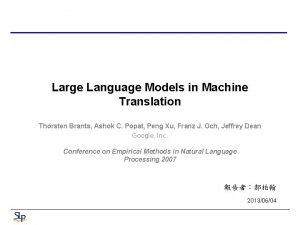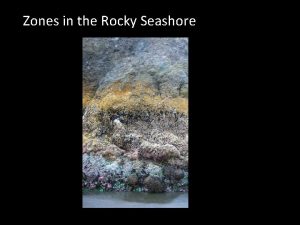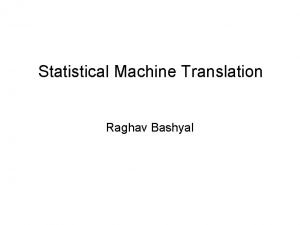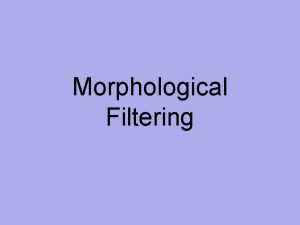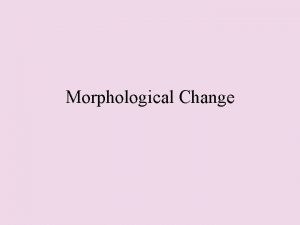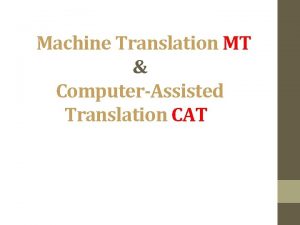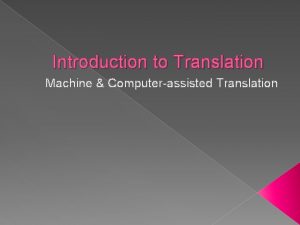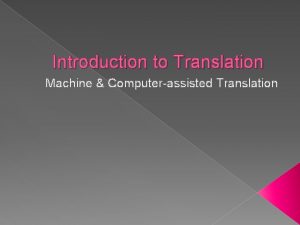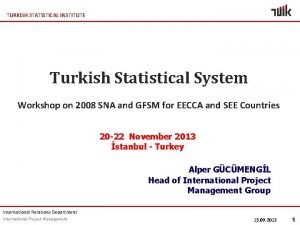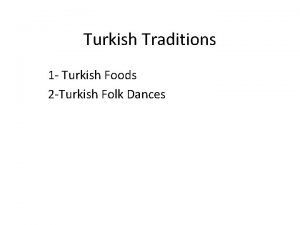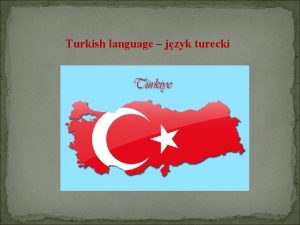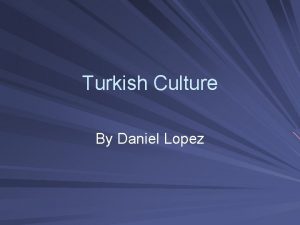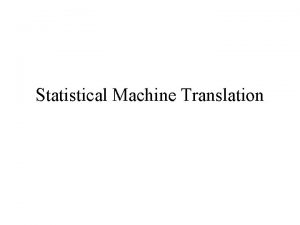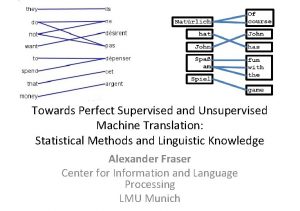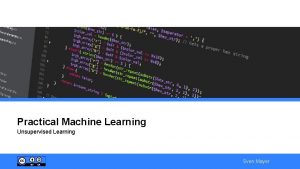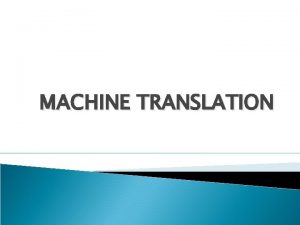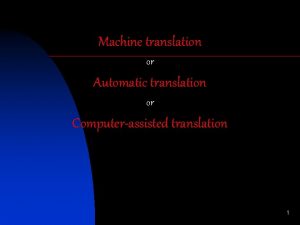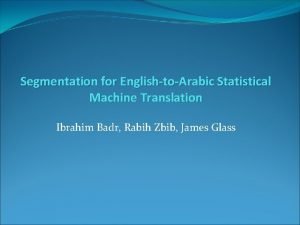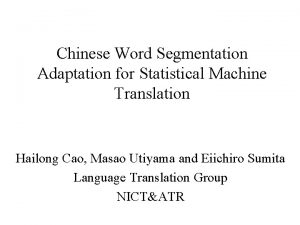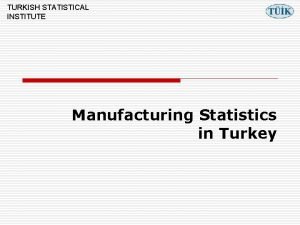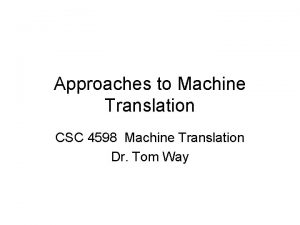Unsupervised Turkish Morphological Segmentation for Statistical Machine Translation









































- Slides: 41

Unsupervised Turkish Morphological Segmentation for Statistical Machine Translation Coskun Mermer and Murat Saraclar Workshop on Machine Translation and Morphologically-rich Languages Haifa, 27 January 2011

Why Unsupervised? n No human involvement n Language independence n Automatic optimization to task

Using a Morphological Analyzer n Linguistic morphological analysis intuitive, but q q q language-dependent ambiguous not always optimal n n manually engineered segmentation schemes can outperform a straightforward linguistic morphological segmentation naive linguistic segmentation may result in even worse performance than a word-based system

Heuristic Segmentation/Merging Rules n Widely varying heuristics: q Minimal segmentation n q Start with linguistic segmentation and take back some segmentations n q q Only segment predominant & sure-to-help affixation Requires careful study of both linguistics, experimental results Trial-and-error Not portable to other language pairs

Adopted Approach n Unsupervised learning form a corpus n Maximize an objective function (posterior probability)

Morfessor n M. Creutz and K. Lagus, “Unsupervised models for morpheme segmentation and morphology learning, ” ACM Transactions on Speech and Language Processing, 2007.

Probabilistic Segmentation Model n n : Observed corpus : Hidden segmentation model for the corpus (≈ “morph” vocabulary)

MAP Segmentation

Probabilistic Model Components n n n : Uniform probability for all possible morph vocabularies of size M for a given morph token count of N (i. e. , frequencies do not matter) : For each morph, product of its character probabilities (including end-of-morph marker) : Product of probabilities for each morph token

Original Search Algorithm n Greedy n Scan the current word/morph vocabulary n Accept the best segmentation location (or non-segmentation) and update the model

Parallel Search n Less greedy n Wait until all the vocabulary is scanned before applying the updates

Sequential Search

Sequential Search

Sequential Search (different vocabulary scan orders)

Sequential Search vs. Parallel Search

Sequential Search vs. Parallel Search

Sequential Search vs. Parallel Search

Sequential Search vs. Parallel Search

Random Search n Even less greedy n Do not automatically accept the maximum probability segmentation, instead make a random draw proportional to the posteriors q cf. Gibbs sampling

Deterministic vs. Random Search

Deterministic vs. Random Search

Deterministic vs. Random Search

Deterministic vs. Random Search

Deterministic vs. Random Search

So far… n We can obtain lower model costs by being less greedy in search n Does it translate to BLEU scores?

Turkish-to-English

English-to-Turkish

Turkish-to-English (1 reference)

English-to-Turkish (1 reference)

On a Large Test Set (1512 sentences) Turkish-to-English, No MERT

Optimizing Segmentation for Statistical Translation n The best-performing segmentation is highly task-dependent q q n Could change when paired with a different language Depends on size of parallel corpora For a given parallel corpus, what is the optimal segmentation in terms of translation performance?

Adding Bilingual Information : Using IBM Model-1 probability n q Estimated via EM

Results

Results

Results

Results

Evolution of the Gibbs Chain

Evolution of the Gibbs Chain

Evolution of the Gibbs Chain (BLEU)

Evolution of the Gibbs Chain (BLEU)

Conclusions n n Probabilistic model for unsupervised learning of segmentation Improvements to the search algorithm q q n n Parallel search Random search via Gibbs sampling Incorporated (an approximate) translation probability to the model So far, model scores do not correlate well with BLEU scores
 Unsupervised segmentation
Unsupervised segmentation Generative adversarial networks
Generative adversarial networks Watershed morphology
Watershed morphology Difference between communicative and semantic translation
Difference between communicative and semantic translation Number translation using voice translation profiles
Number translation using voice translation profiles Left and right transformations
Left and right transformations 10 noun phrases
10 noun phrases Unsupervised learning in data mining
Unsupervised learning in data mining Open set domain adaptation by backpropagation
Open set domain adaptation by backpropagation Perbedaan supervised dan unsupervised classification
Perbedaan supervised dan unsupervised classification Lda supervised or unsupervised
Lda supervised or unsupervised Transductive learning for unsupervised text style transfer
Transductive learning for unsupervised text style transfer Autoencoders, unsupervised learning, and deep architectures
Autoencoders, unsupervised learning, and deep architectures Iso cluster unsupervised classification
Iso cluster unsupervised classification Maxnet neural network
Maxnet neural network Is pca unsupervised learning
Is pca unsupervised learning Unsupervised learning
Unsupervised learning Introduction to machine learning andrew ng
Introduction to machine learning andrew ng Supervised data mining
Supervised data mining Deep reinforcement learning example
Deep reinforcement learning example Unsupervised models for named entity classification
Unsupervised models for named entity classification Contractive autoencoder
Contractive autoencoder Supervised and unsupervised learning
Supervised and unsupervised learning Bert confusion matrix
Bert confusion matrix Unsupervised pos tagging
Unsupervised pos tagging The wake-sleep algorithm for unsupervised neural networks
The wake-sleep algorithm for unsupervised neural networks Unsupervised hierarchical clustering
Unsupervised hierarchical clustering Supervised vs unsupervised data mining
Supervised vs unsupervised data mining Interactive machine translation
Interactive machine translation Lms machine translation
Lms machine translation Visualizing and understanding neural machine translation
Visualizing and understanding neural machine translation Google translate
Google translate Machine translation
Machine translation Machine translation
Machine translation Machine translation
Machine translation Meteor vs bleu
Meteor vs bleu Lms machine translation
Lms machine translation Machine translation in natural language processing
Machine translation in natural language processing John hutchins machine translation
John hutchins machine translation Machine translation presentation
Machine translation presentation Large language models in machine translation
Large language models in machine translation Turkish washcloth seaweed
Turkish washcloth seaweed
